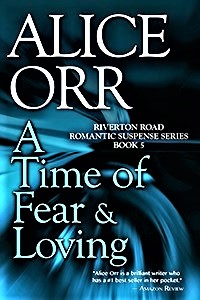 Gratitude Attitude Writer’s Style. “At this time of the rolling year,” as our great storytelling mentor Charles Dickens wrote in A Christmas Carol, gratitude feels obligatory, or maybe just appropriate, if you are more comfortable with that.
Gratitude Attitude Writer’s Style. “At this time of the rolling year,” as our great storytelling mentor Charles Dickens wrote in A Christmas Carol, gratitude feels obligatory, or maybe just appropriate, if you are more comfortable with that.
Gratitude Attitude Writer’s Style. Which got me thinking about what we, as writers specifically, might list in our thankfulness inventory. So, I posted an internet query under the heading “Writing Life Gratitude.” The responses have made me very grateful indeed.
Gratitude Attitude Writer’s Style. Most prominently, we are grateful for one another. “Critique partners who give me their honest opinions and encouragement when I make mistakes,” says Kayelle Allen. Ruth Casie adds, “Writing partners who enrich my life with their friendship, caring and great brainstorming ideas.”
Gratitude Attitude Writer’s Style. Each of us can reflect on a history of helpers: other writers who may themselves suffer through dark passages of career disaster, crippling self-doubt, or personal life turmoil. Nonetheless, they reach out to urge us back toward the light. Roni Denholtz, Marcia James, D.V. Stone and Jennifer Wilck echo the rest of us in saying, “Thank you all so much for that.”
Gratitude Attitude Writer’s Style. Joan Ramirez is grateful for “a loving husband who shares my enthusiasm for my novel writing career” and is her best friend as well. Several others, including myself, mention family, including grandchildren. Writing may be a solitary pursuit, but we are definitely not alone.
Gratitude Attitude Writer’s Style. And who isn’t thankful for readers? “All the readers who’ve stuck with me for so many years and keep buying my new books,” says Meredith Bond, while Marcia James reminds us to thank the Beta readers who help us hone our work, and I feel personally in debt to readers who make the effort to review what we write. Gratitude Attitude Writer’s Style. I was moved by those of us – Connie Bretes, Paul Lima, Nancy Morse – who shared their struggles through serious health problems, and somehow found the will and stamina to keep on working, or to get back to the writing desk eventually.
Gratitude Attitude Writer’s Style. I was moved by those of us – Connie Bretes, Paul Lima, Nancy Morse – who shared their struggles through serious health problems, and somehow found the will and stamina to keep on working, or to get back to the writing desk eventually.
Gratitude Attitude Writer’s Style. Jean Brashear, Marie Force, Joan Peck and Livia Quinn spoke of the 60 Minutes story of Tim Green’s battle with ALS. “How dare I ever falter for a second,” Jean says, in the face of such inspiring courage.
Gratitude Attitude Writer’s Style. My own heart was hard-struck by the inspiration of one of our own, Susan Meier. “This year, every inch of my life, including my career, was tested when my son died in January,” Susan says, and thanks RWA and her sister chapters for their support. At the time of her loss, she had a manuscript due, and her publishers and editors helped her through when she insisted she must work on toward deadline. We are also with you, Susan.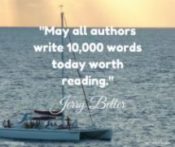
Gratitude Attitude Writer’s Style. The greatest number of responses to my Writing Life Gratitude question were about being thankful for the opportunity to write in the first place. “To fill my hours with writing, and for the wonderful characters that keep me company,” says Carol Roddy aka Caroline Warfield. “To start with an idea and end with a published book,” says Joan Peck. Dee Knight speaks of her latest book, which “languished unfinished for years,” and now is completed at last.
Gratitude Attitude Writer’s Style. The ultimate joy of writing is summed up beautifully by Elizabeth Tarry-Crowe. “I’m grateful that, after years of writing, I still strive to get better, shoot higher, try harder,” and Lisabet Sarai agrees. Whatever life and career setbacks confront us, we do what we can and must to heal, then we forge forward again.
Gratitude Attitude Writer’s Style. Finally, as in the beginning, we are together. “I’m grateful for my writing friends….” Alice Valdal says. “The writing world is so different from the one I first joined, but writers willing to share and laugh and cry and encourage and keep trying are still there. For that I am grateful.” Me too! Happy holidays. Alice Orr – www.aliceorrbooks.com
Alice Orr – www.aliceorrbooks.com
– R|R –
Readers recommend Alice’s latest novel. A Time of Fear & Loving – Riverton Road Romantic Suspense Book 5. Available HERE.
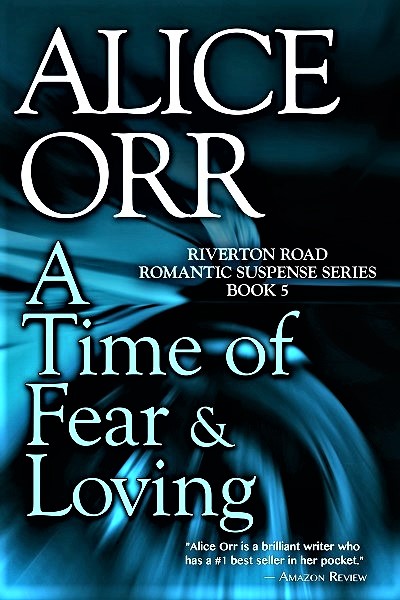 Praise for A Time of Fear & Loving. “Alice Orr is the queen of ramped-up stakes and page-turning suspense.” “Warning. Don’t read before bed. You won’t want to sleep.” “The tension in this novel is through the roof.” “I never want an Alice Orr book to end.” “The best one yet!” “Budding romance sizzles in the background until it ignites with passion.”
Praise for A Time of Fear & Loving. “Alice Orr is the queen of ramped-up stakes and page-turning suspense.” “Warning. Don’t read before bed. You won’t want to sleep.” “The tension in this novel is through the roof.” “I never want an Alice Orr book to end.” “The best one yet!” “Budding romance sizzles in the background until it ignites with passion.”
A Wrong Way Home – Riverton Road Romantic Suspense Book 1 – is a FREE Kindle eBook HERE. “Danger & romance explode in a red-hot read.” Look for all of Alice’s books HERE.
http://facebook.com/aliceorrwriter/
http://twitter.com/AliceOrrBooks/
http://goodreads.com/aliceorr/
http://pinterest.com/aliceorrwriter/
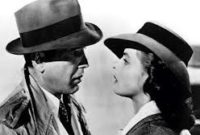 [For example, I was hooked by both Rick and Ilsa in the film
[For example, I was hooked by both Rick and Ilsa in the film 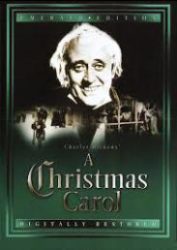 [For example, Charles Dickens brought Ebenezer Scrooge to life on the page in
[For example, Charles Dickens brought Ebenezer Scrooge to life on the page in [Here’s another way to Tell Strong Stories in terms of drama, intensity and power. Make sure every character fears something. Especially your main character. For example,
[Here’s another way to Tell Strong Stories in terms of drama, intensity and power. Make sure every character fears something. Especially your main character. For example, 